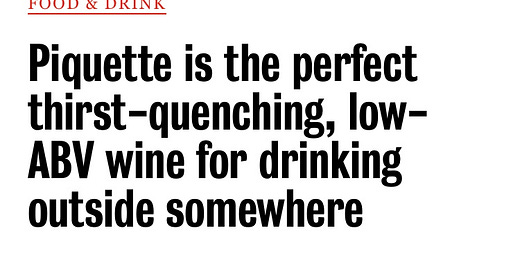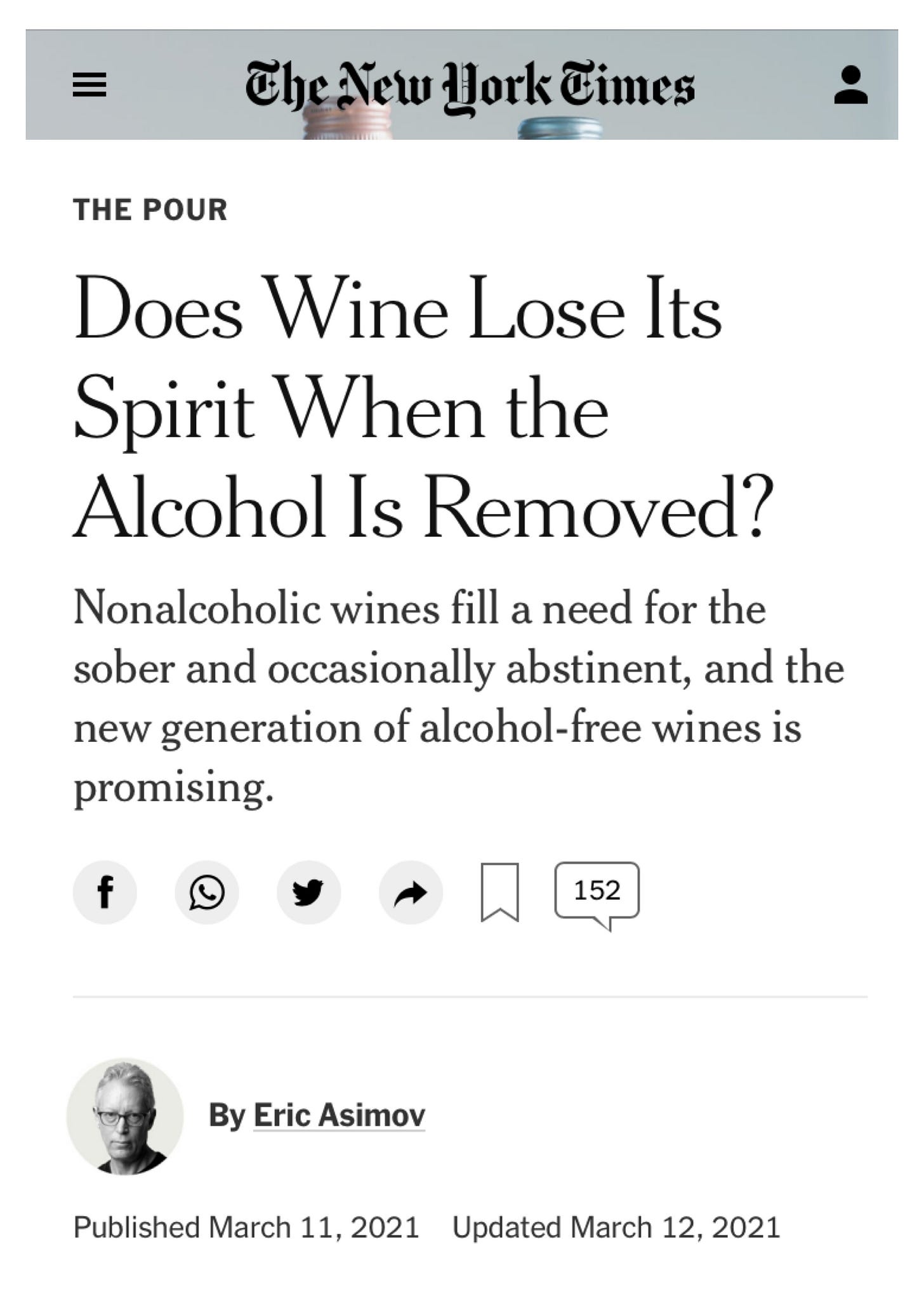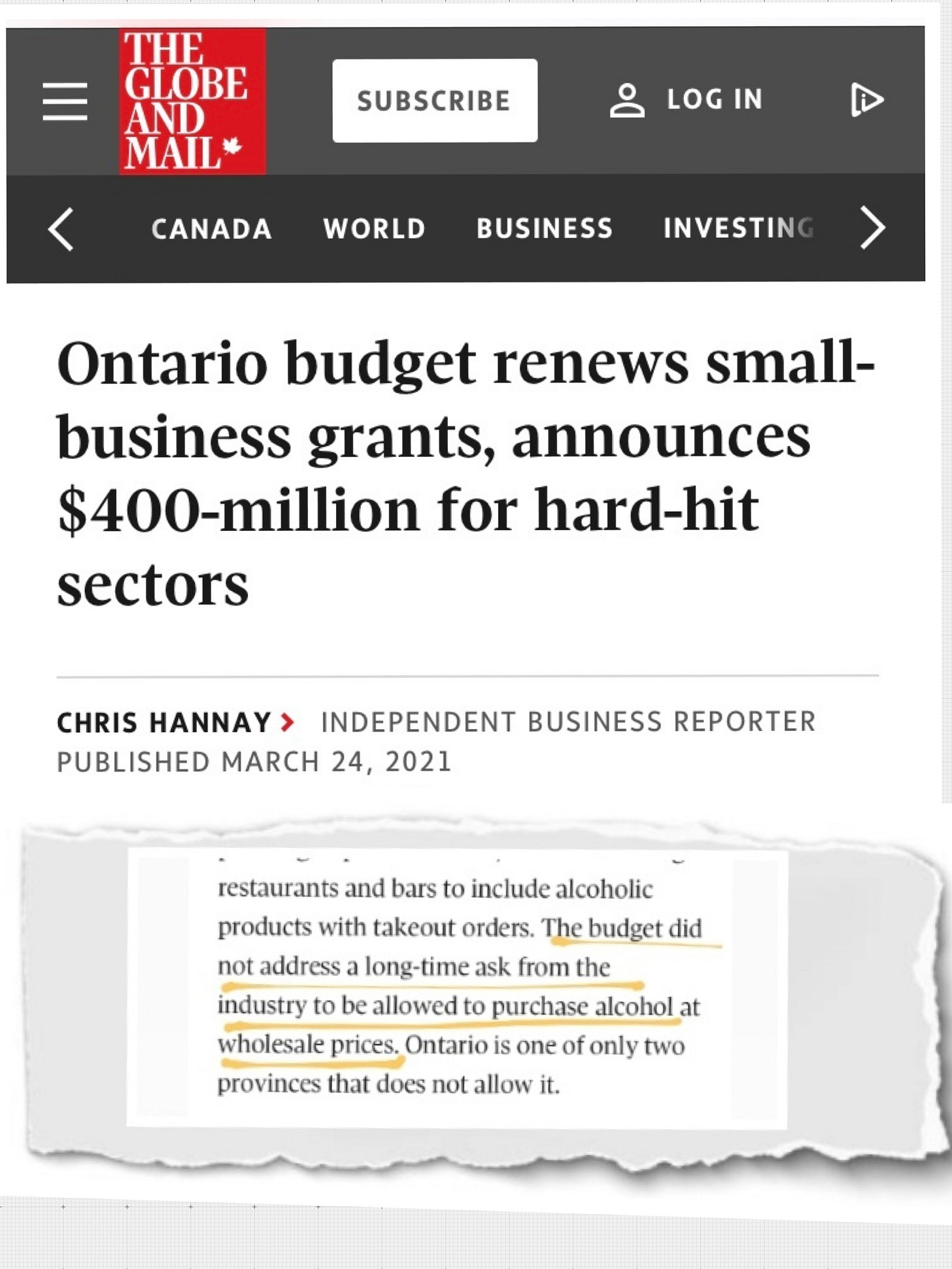Low/No ABV
Low ABV
Piquette is a low alcohol wine product made from the second pressings of grape pomace, known to have been enjoyed by French farmhands and vineyard workers. According to Jancis Robinson, piquette, or little wine (or petit vin if you fancy), was rejuvenated in part due to the sustainability movement; which makes sense since it gives a second life to spent grape must (the skins, seeds, and stems of the grapes used to make wine), which are normally discarded, but are used to make piquette.
Toronto Life’s Kate Dingwall wrote how Piquette is the perfect thirst-quenching, low-ABV wine for drinking outside somewhere, recommending several including: Redtail Vineyards single-serving bottles of piquette; Paradise Grapevine was going to make 3 different piquettes but then blended them all together, think spritenesteafruitopia; Traynor’s fun and refreshing Ophelia; Revel Cider’s Muscat Piquette apparently tastes like “watermelon jolly rancher dust on.. well... actual watermelons”; Leaning Post’s first piquette is “vibrant, cranberry-watermelon bubbles with a good dose of funkiness”; and Burdock Brewery’s Piquey Bons uses upcycled Niagara cabernet franc skins and has “the vibrant colour of a purple Freezie.”
No ABV
The NYT’s Eric Asimov asked Does Wine Lose Its Spirit When the Alcohol Is Removed? Nonalcoholic wine is made by first making wine — when the yeast converts the sugars of grapes into alcohol through the process of fermentation — and then removing the alcohol.
Removing the alcohol is no minor surgery for a wine. Not only does it account for the intoxicating effect, it contributes to the body and texture of a wine, as well as the flavors and potential for complexity.
In addition, no matter how relatively gentle the process, the removal of alcohol is nonetheless a harsh technological disruption of a wine. The sense of purity, energy and life that a good wine exudes is impossible in an alcohol-free bottle.
While no-alcohol wines are a small fraction ($36 million) of the entire wine category ($21 billion) in the U.S., they are growing, both in dollars and in consumer interest: retail sales of nonalcoholic wines in the U.S. increased 34%; and according to consumer research org Wine Intelligence, there is an unmet consumer need when it comes to low- and no- alcohol wine (though availability and taste are challenges).
But it’s the fastest growing category for Milan, NY importer Schatzi Wines, who imports the Eins-Zwei-Zero series of alcohol-free wines from Leitz, a Riesling specialist in the Rheingau region of Germany. Asimov tried several non-alcohol wines and wrote that most were a bit sweet, but that his fave was the Leitz riesling: “It was the only bottle where I could sense the varietal character of riesling.”
In Ontario, there’s Teetotaler non alcoholic Wines available at Greta Solomon's in Toronto.
No Wholesale Alcohol Pricing in Ontario Budget
The Globe and Mail wrote about how about the Ontario government was renewing its small-business support grants and providing extra help to sectors hit hardest by the pandemic, but noted the lack of sector-specific support for Ontario’s bars and restaurants:
No new help specific to the food industry was announced, with the budget instead pointing to past measures, such as allowing restaurants and bars to include alcoholic products with takeout orders. The budget did not address a long-time ask from the industry to be allowed to purchase alcohol at wholesale prices. Ontario is one of only two provinces that does not allow it.
Many in the hospitality industry have been asking for wholesale pricing for alcohol, which would allow bars and restaurants to purchase liquor at wholesale prices, instead of at consumer-level retail prices. It’s a measure that’s been supported by Restaurants Canada, the Ontario Special Advisor for the Beverage Alcohol Review, and the federal Commissioner of Competition. Alberta and PEI are currently the only provinces that allow wholesale alcohol pricing; though it has also been permitted in British Columbia as a temporary pandemic measure.





